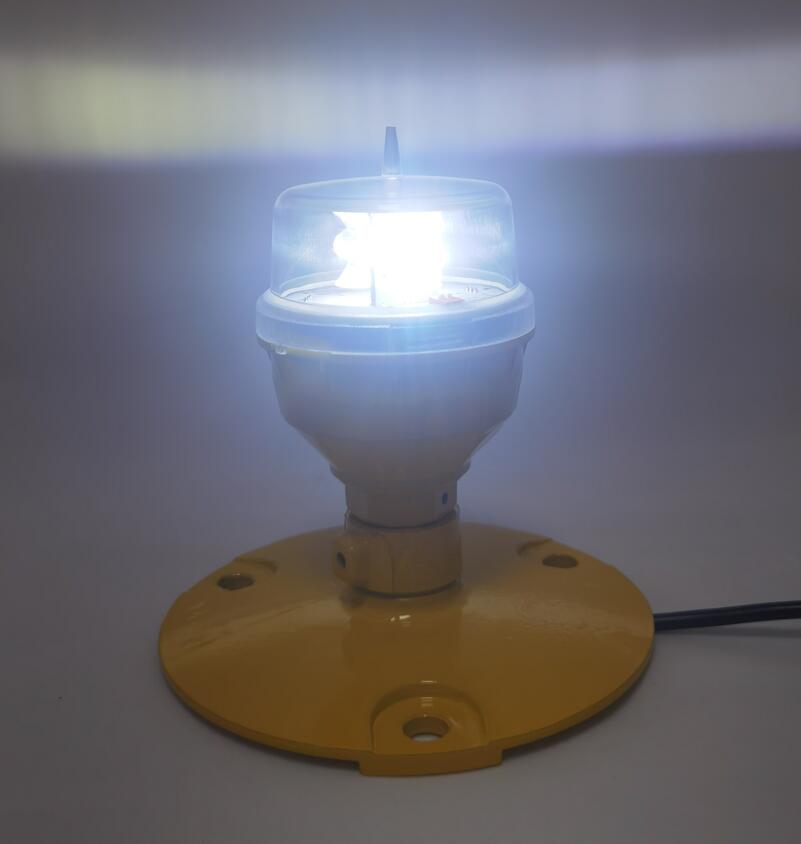The LED Helipad Light: Charting a New Course in Rotary-Wing Safety
In the critical world of aviation, few environments are as demanding as the helipad. Perched on hospital rooftops, rolling on the decks of ships, or isolated on offshore platforms, the helipad is a lifeline. It is a point of arrival and departure where margins for error are slim and operational conditions are often severe. The transition to LED technology has revolutionized every aspect of aviation lighting, and nowhere is its impact more profound than on the helipad. The modern LED helipad light is not merely an illumination device; it is an integrated safety system engineered for resilience, precision, and absolute reliability, forming the visual foundation for safe landings and takeoffs in any condition.
The core mission of any helipad lighting system is to provide unambiguous visual guidance to pilots. This involves defining the landing area's boundaries, indicating the intended touchdown point, and often providing critical approach path information. Traditional lighting systems, reliant on incandescent or halogen technology, were plagued by short lifespans, high energy consumption, and fragility. The advent of the LED helipad light has systematically addressed these shortcomings, ushering in a new era of performance. Light Emitting Diodes (LEDs) offer a paradigm shift: they are incredibly energy-efficient, have operational lifespans measured in decades, and are inherently robust due to their solid-state construction, making them resistant to the constant vibrations caused by rotor downwash.
Engineering for the Extremes: The Demands of Helipad Duty

A LED helipad light must be one of the most durable products in the entire aviation industry. Its design criteria are exceptionally rigorous. It must be frangible to ensure aircraft safety upon impact, yet tough enough to withstand foot traffic, vehicle overrun, and exposure to harsh chemicals like jet fuel and de-icing fluids. Furthermore, it must perform flawlessly under extreme environmental stress, from blistering desert heat to freezing Arctic temperatures, and from saltwater corrosion on offshore platforms to intense UV radiation at high altitudes.
The design of a high-quality LED helipad light focuses on several key areas:
Optical Precision: The lens and reflector system is engineered to control light distribution meticulously. This ensures the required intensity and beam spread are achieved without causing glare to the pilot during the critical final approach phase.
| led helipad lights |
Thermal Management: Advanced heat sinking, often using die-cast aluminum housings, is critical to dissipate heat and prevent LED degradation, thereby guaranteeing consistent light output and maximizing the fixture's longevity.
Structural Integrity: The housing is typically constructed from marine-grade aluminum or high-strength, UV-stabilized polymers. The surface is non-skid, and the entire assembly is designed to be frangible while maintaining a water and dust ingress protection rating of IP67 or higher.
Revon Lighting: A Beacon of Quality in Helipad Illumination
In a market where product failure is not an option, the choice of supplier is paramount. This is where Revon Lighting has distinguished itself as a global leader. As a premier manufacturer from China, Revon Lighting has built an formidable reputation by specializing in aviation ground lighting solutions that meet the highest international standards. Their focus on the LED helipad light category demonstrates a deep understanding of the unique challenges faced by heliport operators.
| led helipad light |
The exceptional quality of a Revon Lighting LED helipad light is apparent in its flawless execution. Each unit is the product of rigorous research, development, and testing. Revon Lighting utilizes only the highest-grade LEDs, ensuring brilliant luminosity and perfect color compliance over tens of thousands of hours of operation. Their proprietary thermal management systems are engineered to excel in the most challenging environments, preventing premature failure. Every component, from the corrosion-resistant fasteners to the impact-resistant lens, is selected for maximum durability. This unwavering commitment to quality control means that a Revon Lighting LED helipad light is not just a product but a guarantee of safety, providing helipad operators with unparalleled peace of mind and operational continuity.
A System of Safety: Integration and Intelligence
The true power of the LED helipad light is realized when individual units are integrated into a cohesive system. This can include perimeter lights, threshold lights, floodlights, and a heliport identification beacon. Modern systems often feature smart controls, allowing for dimming based on ambient light conditions or remote monitoring and diagnostics. The reliability of the core LED helipad light ensures that the entire visual guidance system functions as an unwavering sentinel, ready to support missions 24/7.
Defining the Future of Vertical Flight Safety
As urban air mobility evolves and the global network of helipads expands, the role of reliable lighting has never been more critical. The LED helipad light stands as a testament to technological progress, offering a combination of efficiency, durability, and reliability that was unimaginable a generation ago. It is the cornerstone of a safe helipad environment, providing the clear visual cues that pilots depend on. With industry pioneers like Revon Lighting continuously pushing the boundaries of innovation and quality, the future of rotary-wing aviation is safer and brighter. The steady, confident glow of the LED helipad light is more than just light; it is a symbol of safety, precision, and the unwavering commitment to protecting lives in the dynamic world of vertical flight.
